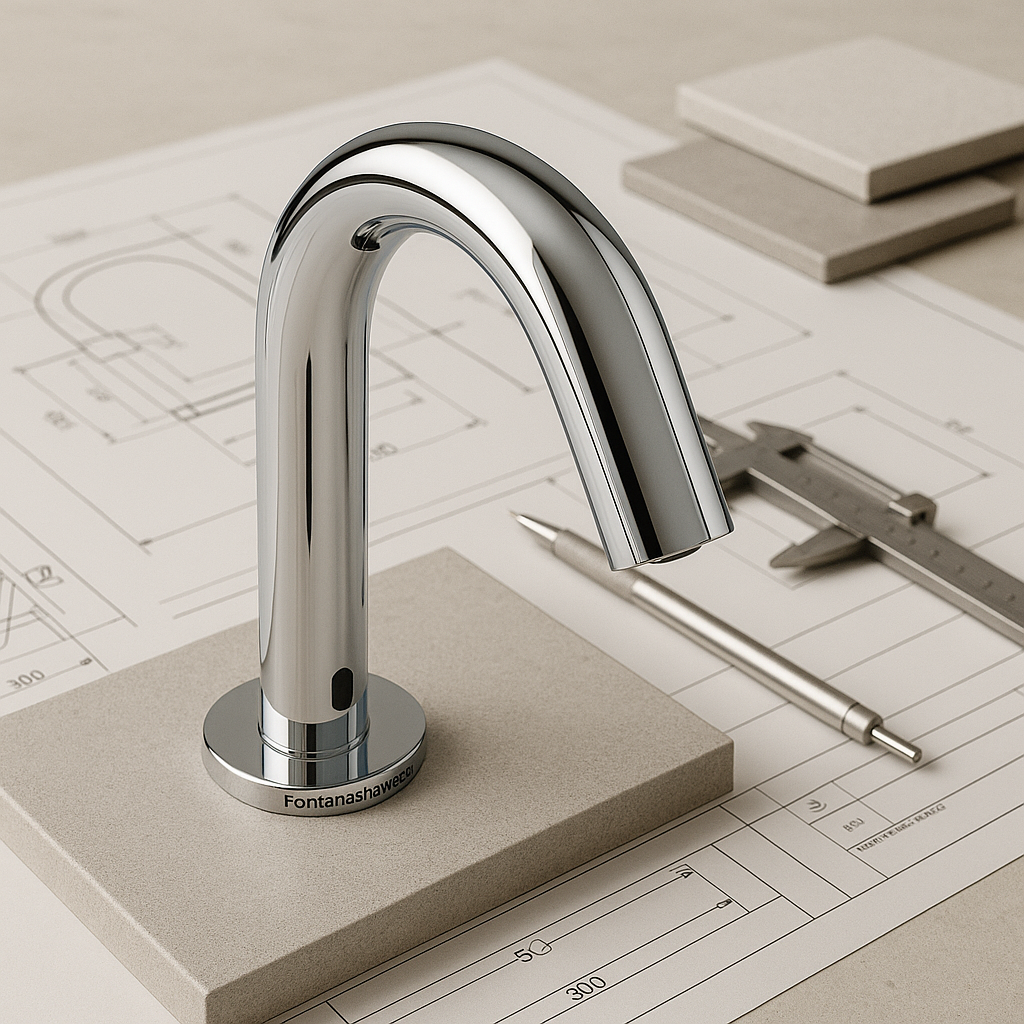
In an age where public trust is synonymous with cleanliness, touchless faucets are no longer frill but function standard. In airports and hospitals, in office buildings and malls, sensor-based systems have dominated discussion on how architects, facilities managers, and engineers design for end-user security, cleanliness, and sustainability. But beyond convenience, the question that increasingly puts adoption into practice is rooted in: what does evidence indicate that touchless technology really adds to cleanliness?
This article explores the evidence, steps, and design consequences of touchless faucets’ sanitary advantage—and how their measurement may guide wiser public space decisions.
1. The Hygiene Equation: Touch Reduction Equals Transmission Reduction
Any surface that gets touched by hundreds of individuals daily is a potential vector of microbial chain transmission. All types of environmental health literature uniformly indicate that faucet handles are some of the germiest public toilet plumbing fixtures—to tend to retain high levels of Staphylococcus aureus, E. coli, and norovirus particles. To be recontaminated on contact with a handle after washing one’s hands takes a blink of the eye.
Touchless eliminates the chain. Motion-detecting technology using infrared or ultrasonic means provides flow without touching, eliminating the final “dirty touchpoint” before leaving the plumbing fixture. A controlled test at the University of Arizona found that the surfaces in the areas near touchless faucets contained 60–70% fewer colonies of microorganisms compared to the manual faucet surface areas. Eliminating a handle from the cleaning cycle significantly reduces the cross-infection risks in high-traffic areas.
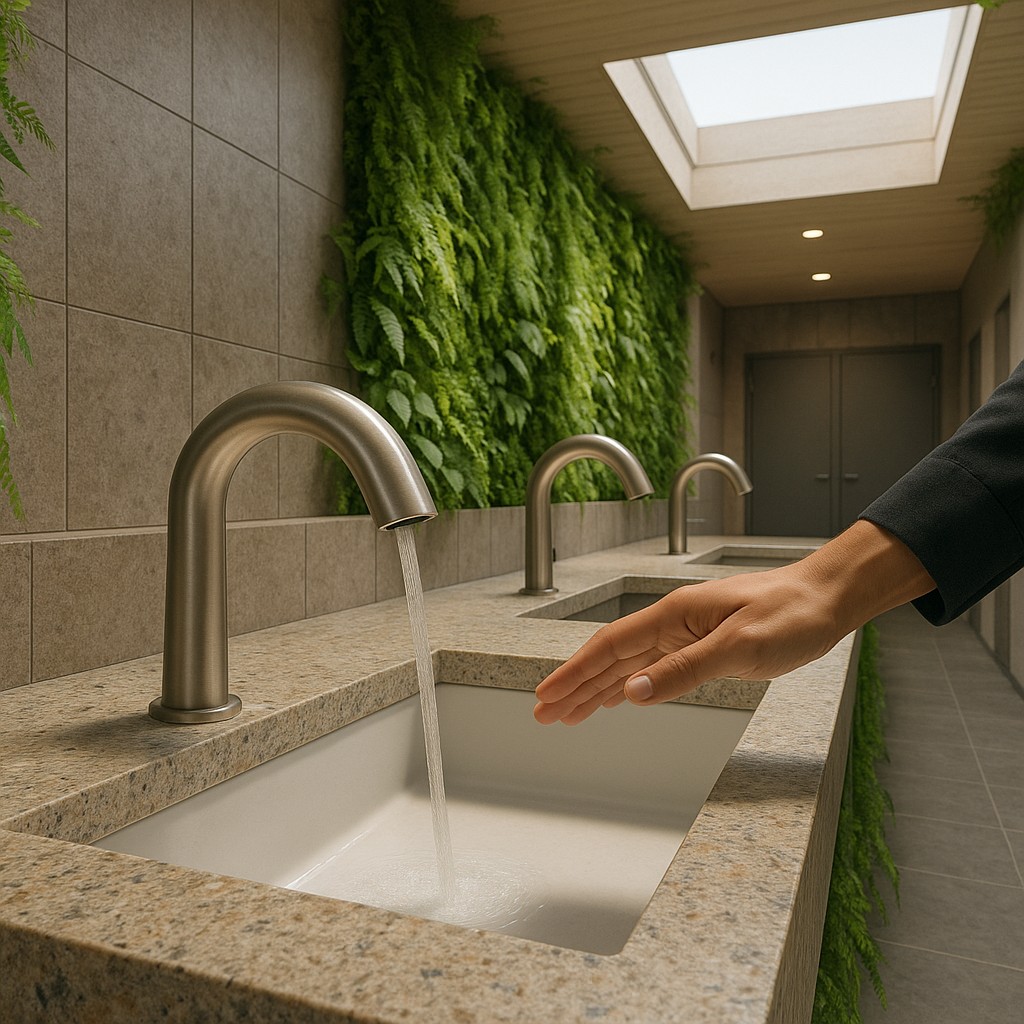

2. Food Service and Health Care Environment Data
The most compelling proof is where the sanitation is mission-critical. Hospitals that have made the changeover to touchless plumbing devices have measurable reductions in contamination. In a study, several health care facilities experienced an average 50% reduction in bacteria on sink fitting and countertop surface following the replacement with touchless faucets.
In foodservice applications, the case isn’t thinner. Hand-free equipment has been certified by the National Sanitation Foundation (NSF) in supporting provision for the capability to gain FDA Food Code standards for recontamination reduction after handwashing. Sensor-actuated sinks in food factories and chain restaurants enable workers to conduct full wash cycles in sanitary environments. Standardization of hygiene practice across shifts and locations also happens through standardized activation time of water required by sensors.
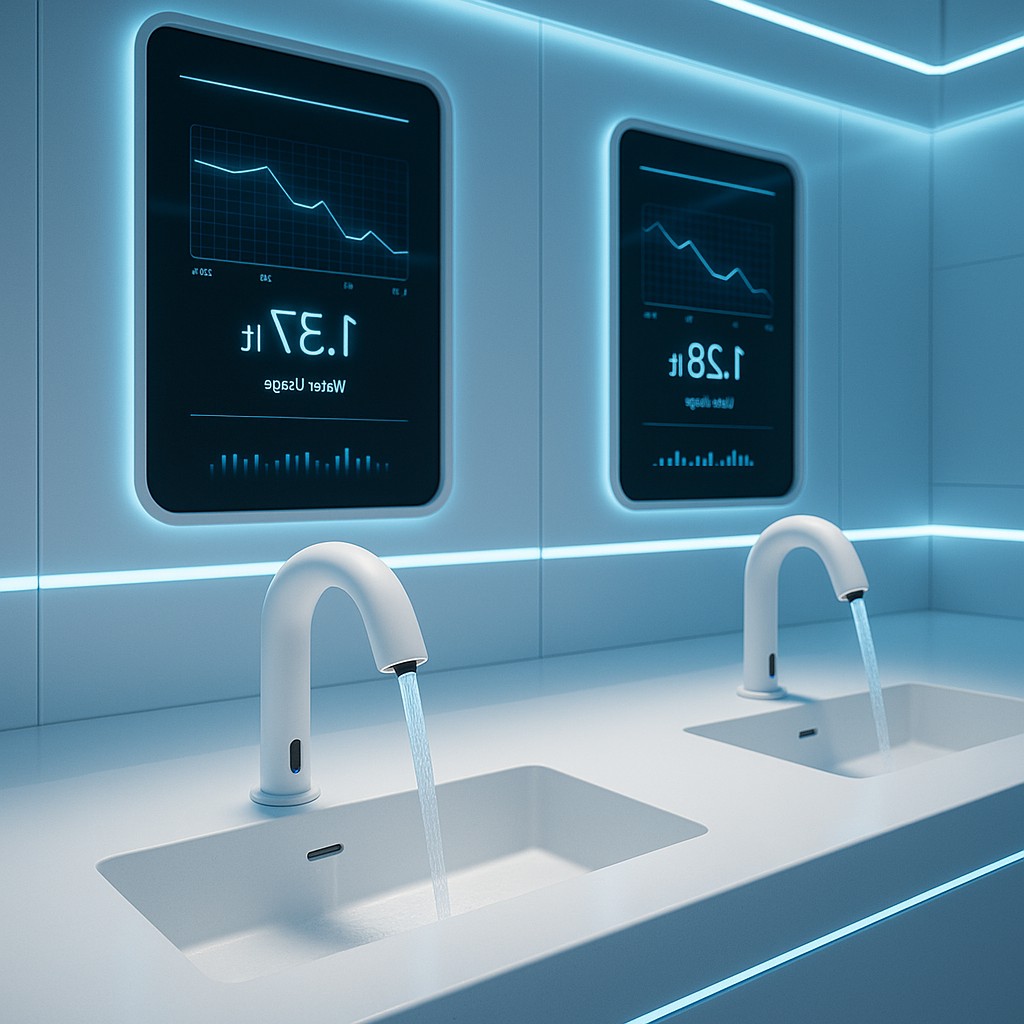
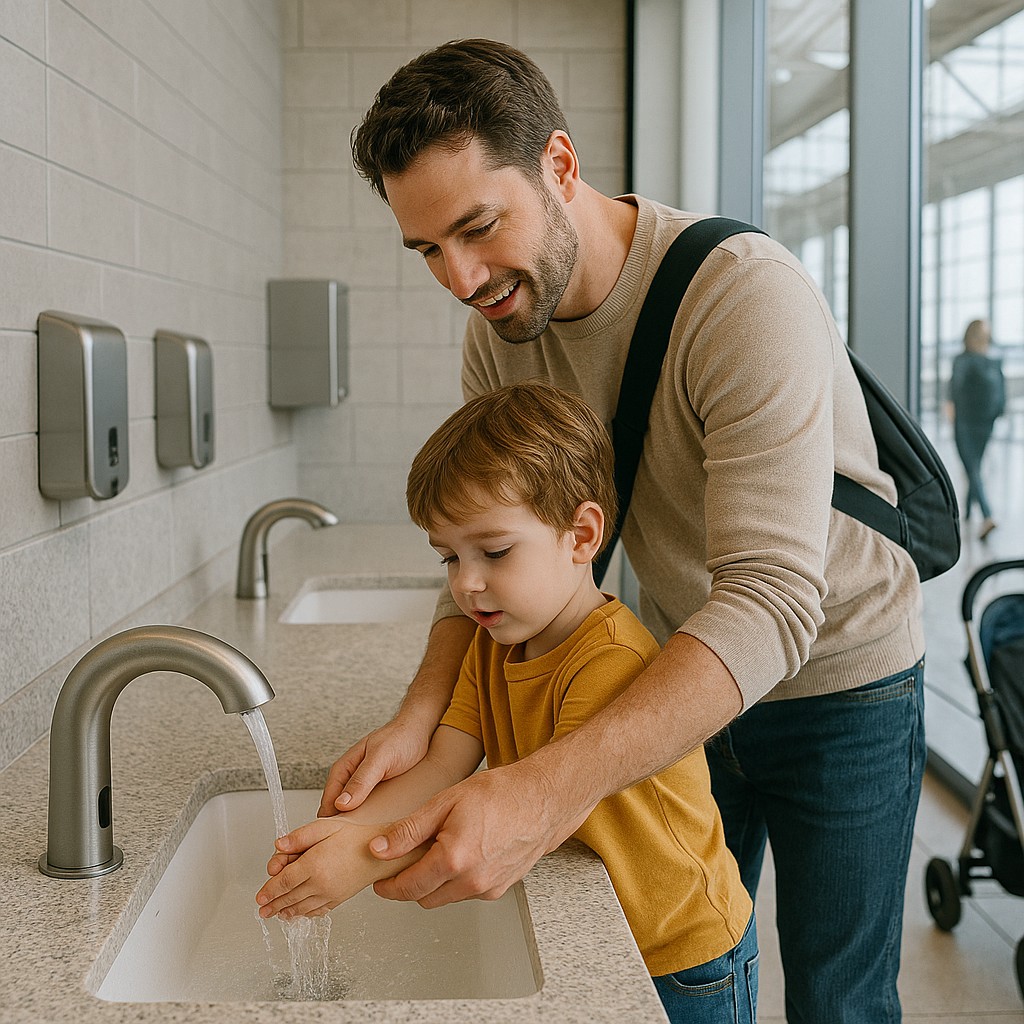
3. Behavioral Science: Encouraging Healthy Hand Hygiene
The benefits of touchless faucets are far-reaching in microbiology—touchless faucets also influence human behavior, too. Behavioral design research learned that users are only 20–30% likely to wash their hands correctly if the process is ritualized and hygienic. Subconscious aversion to touching dirty surfaces makes users skip or do a half-job; touchless activation removes the mental hurdle.
Hospitals that installed the rapid automated sink stations (with rapid touchless soap dispenser and dryers) experienced instant worker and visitor hand-hygiene compliance. Commercial restrooms, with convenience and speed being the ultimate goal, the same again: uninterrupted, sensor-controlled design encourages more forceful and consistent washing action, directly affecting public-health results.
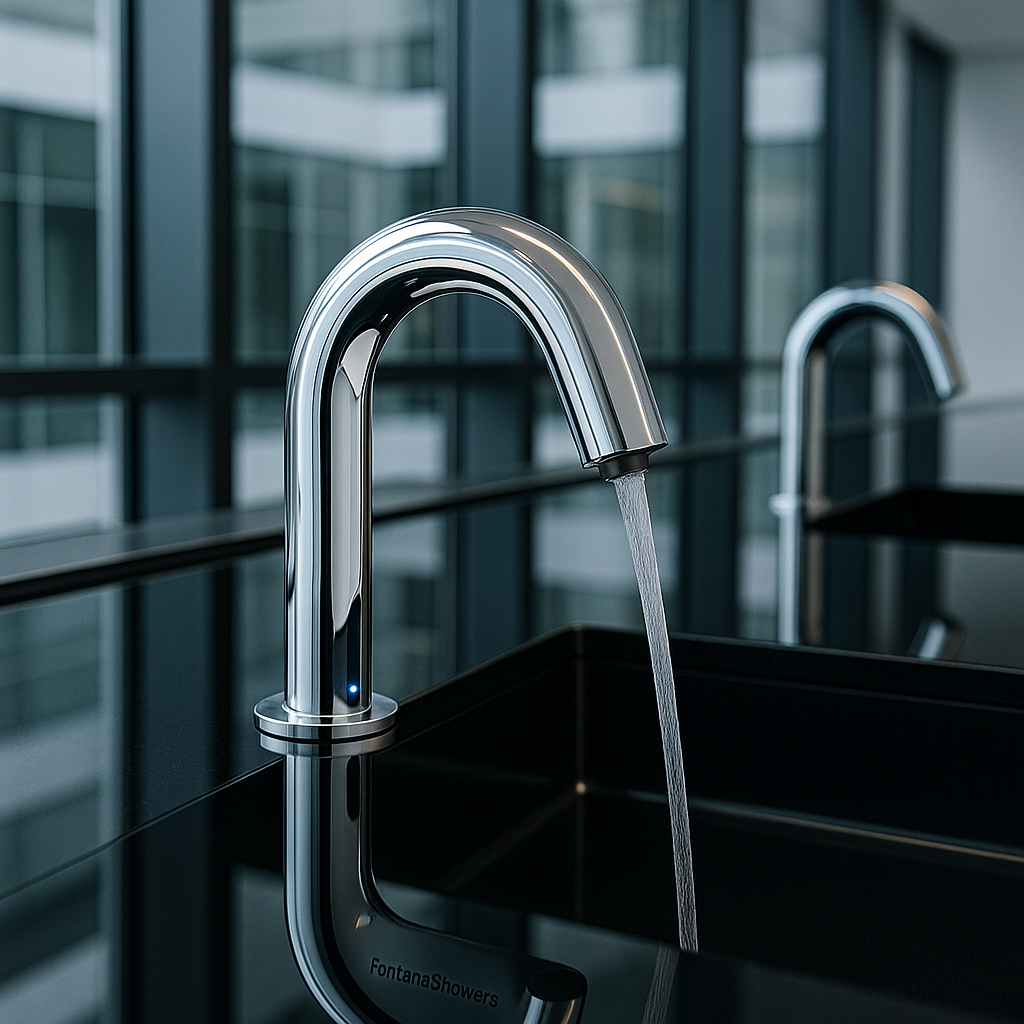
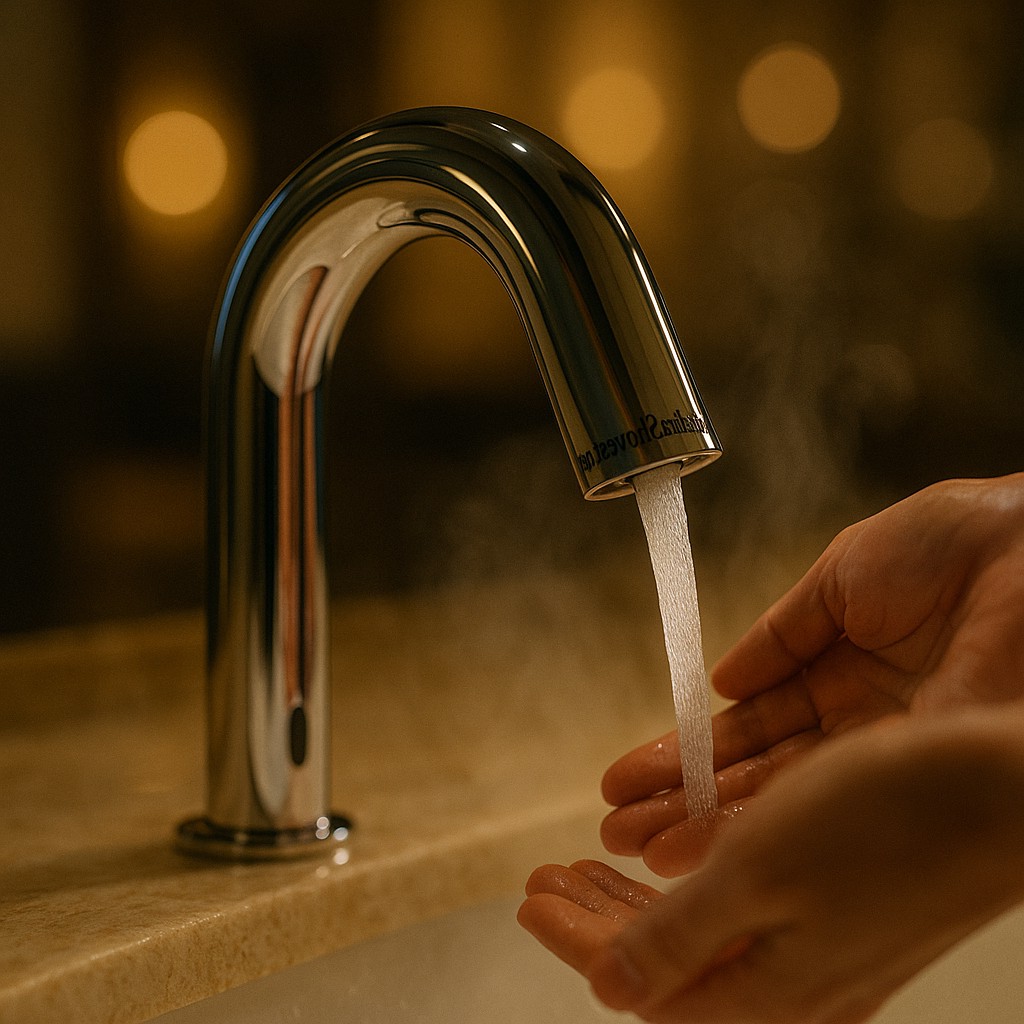
4. Hygiene and Water Conservation: A Two-Measured Metric
Better cleanliness will be the result of the efficiency in the consumption of resources. Touch faucets have the use of aerators and time-run cycles with flow controls which only provide the required amount of water per individual. It stops wasteful practice when manual taps are not being turned off.
U.S. Environmental Protection Agency WaterSense-certified automatic faucets save 30–50% water without compromising the quality of the rinse, extrapolated building-wide in high-activity buildings, and that conservation earns large environmental and economic paybacks—a yet another reason developers and sustainability managers should seek quantifiable measures to finance upgrade.
Interestingly, metered water delivery also minimizes splashback, which may spread germs from unhygienic surfaces. Pressure and directionality are minimized through sensor-based systems, saving hygiene at peak consumption at lower cost.
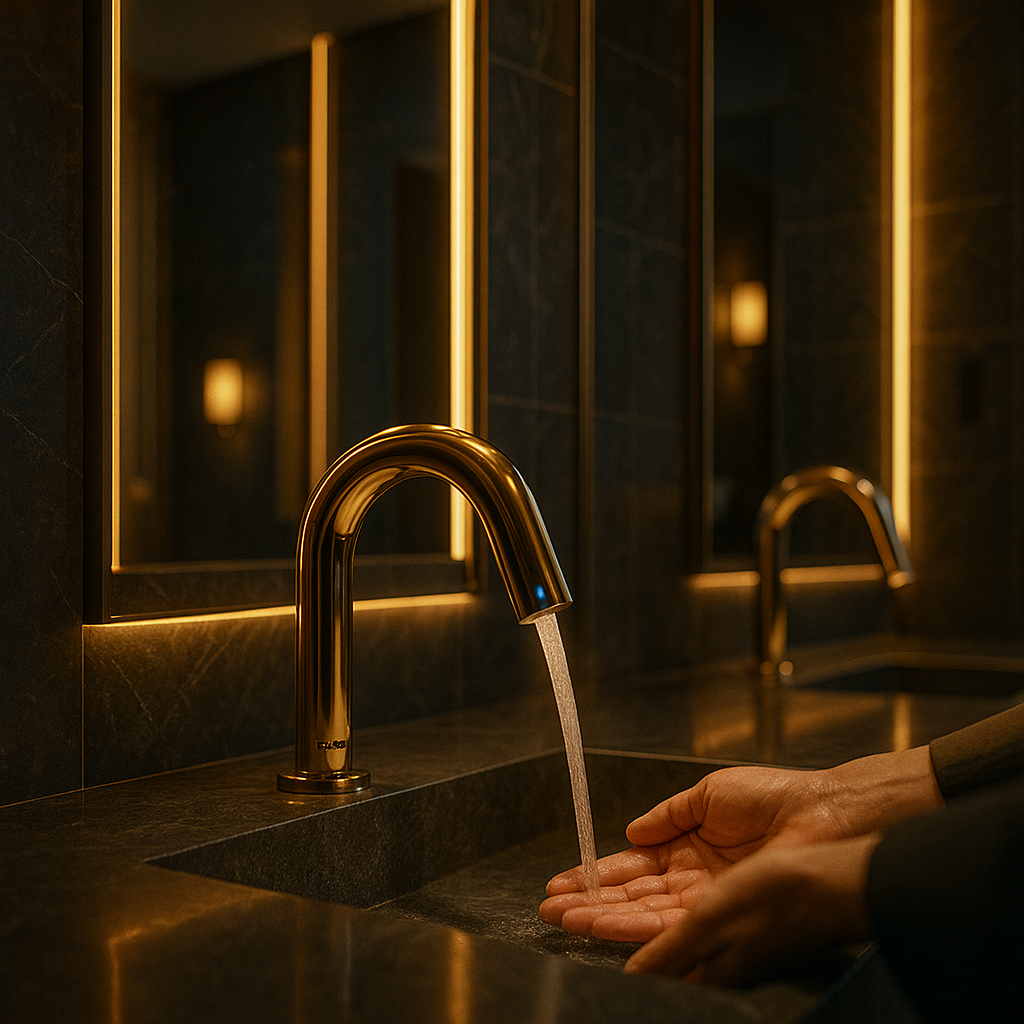
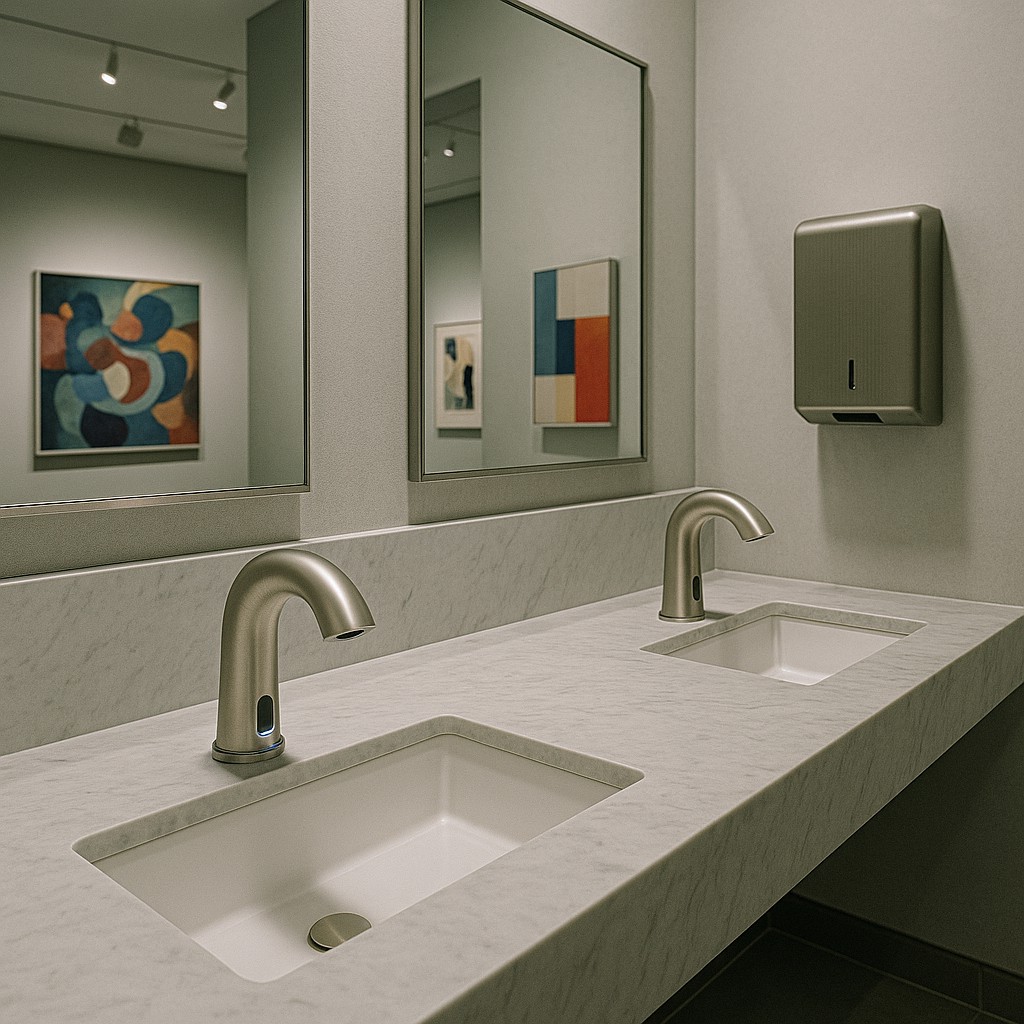
5. Maintenance Metrics: Less Contact, Longer Fixture Life
Fewer touchpoints both protect consumers and double the life of fixtures. Mechanical handles are subject to repeated abuse and wear, causing leaks, cracks, and corrosion—places where bacteria and biofilm thrive. Touchless versions with fewer moving parts have cut maintenance by as much as 35% in five years.
Most manufacturers have since brought on board self-cleaning purge cycles that automatically purge lines after lay-off times to prevent stagnation and bacterial growth. With intelligent monitoring and predictive telemetry, buildings are now able to monitor hygiene performance and water usage in real-time, switch between cleanliness, efficiency, and operation.
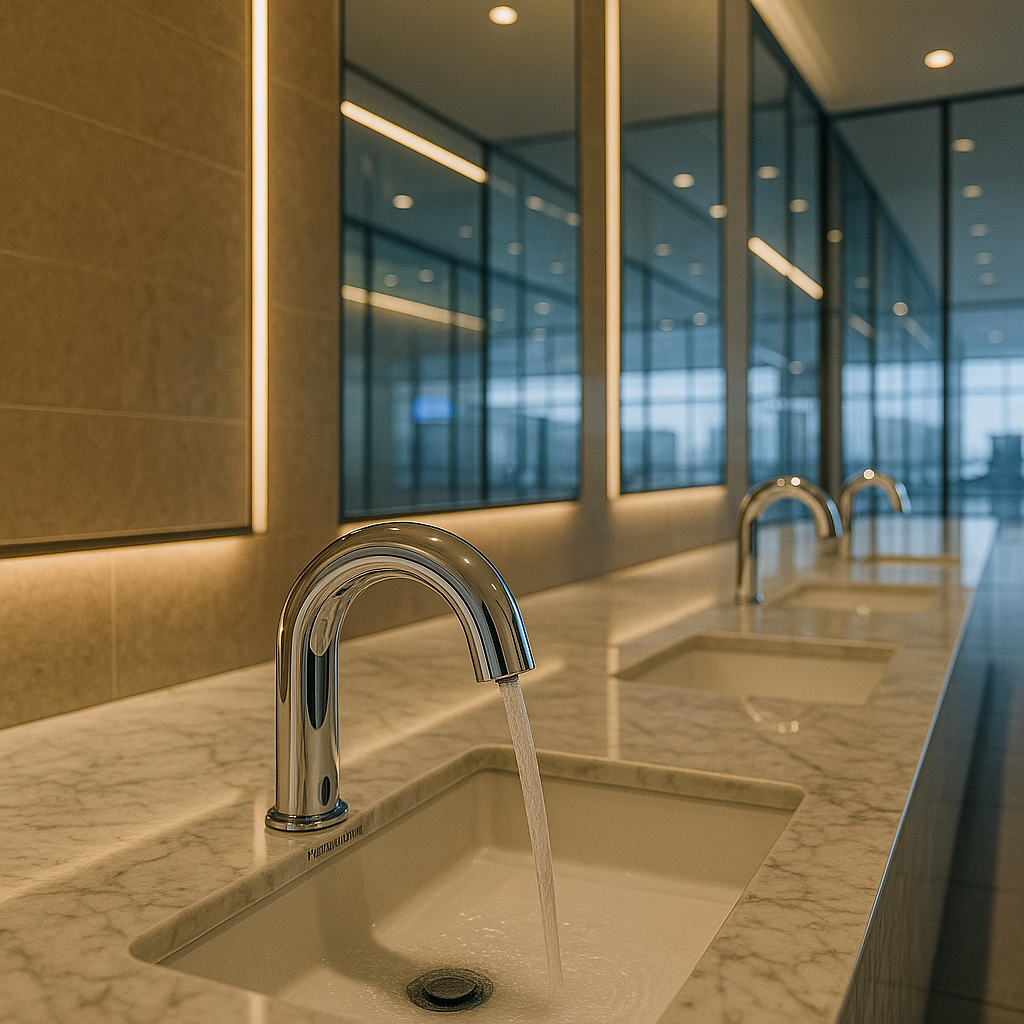
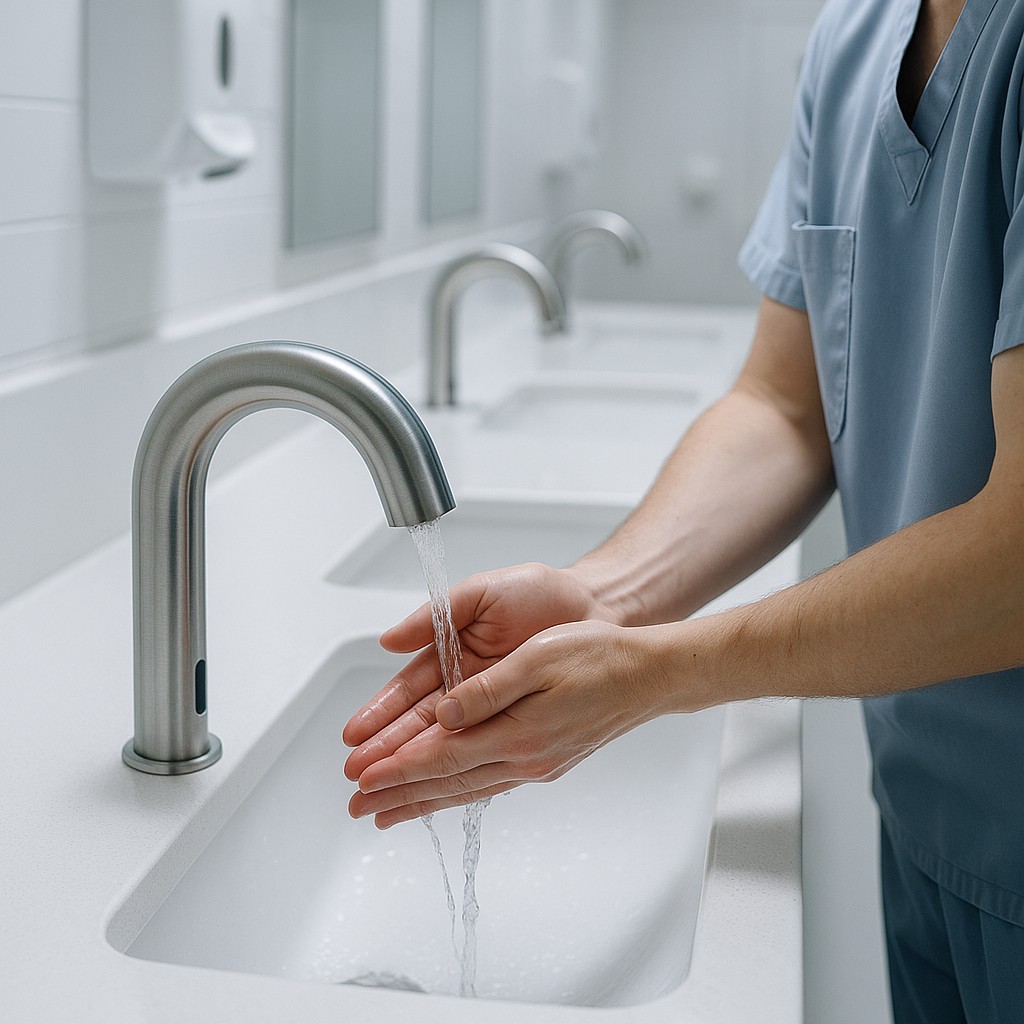
6. Hygiene Monitoring in Smart Buildings
Measurement is the second step in building hygiene design. Smart faucets as part of building management systems (BMS) are able to track usage patterns, temperature distribution, and schedule of cleaning. Not only an assurance of function, it also delivers measurable reporting of cleanliness, a golden nugget that is hard to find for hospitals, schools, and hospitality businesses required to track compliance with cleanliness.
Through touchless fixture integration and IoT dashboards, maintenance personnel can monitor fixture usage, detect anomalies, and confirm cleaning cycles. As a post-pandemic requirement of facilities operations, these measurable hygiene insights are now the new standard of public trust and accountability.
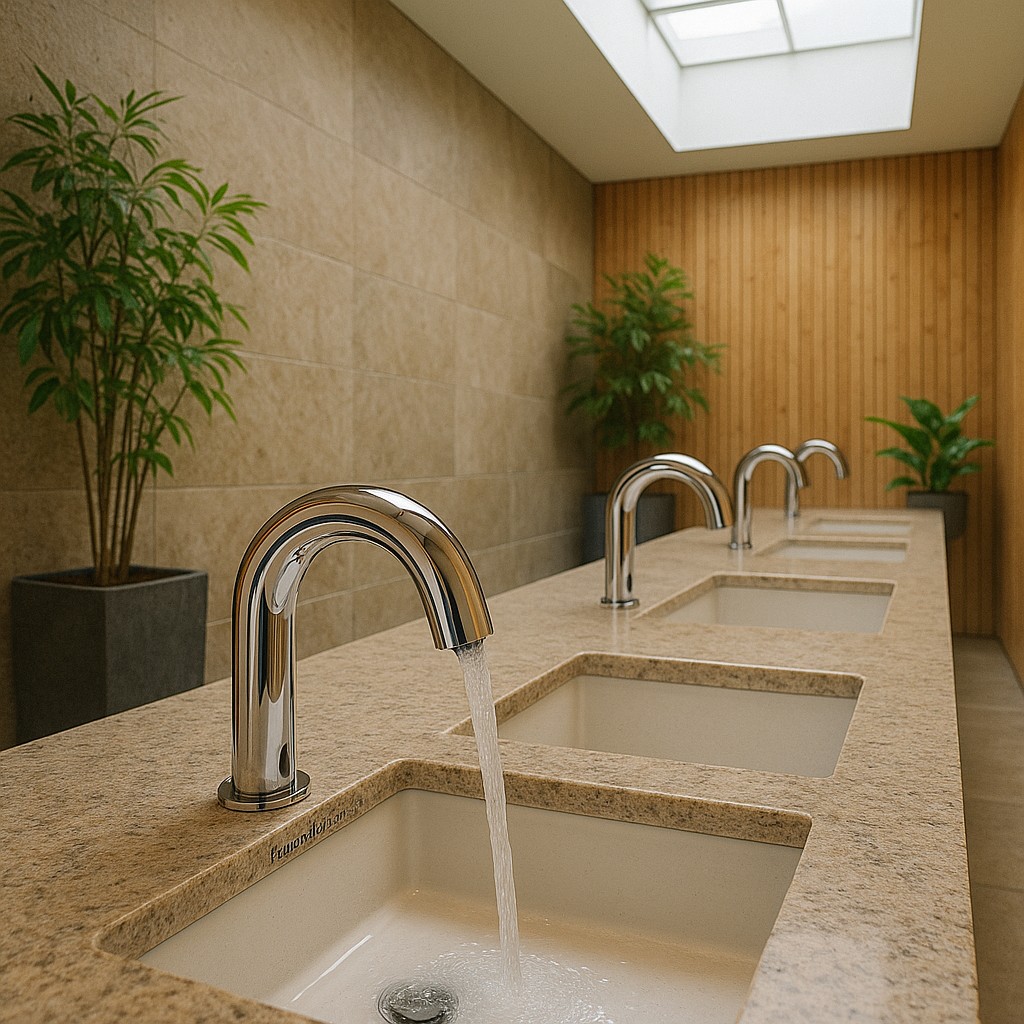

7. Design Implications for Public Architects’ and Engineers
Touchless faucet design now is as much a matter of data as it is of aesthetics. Sensor precision, watering quality compatibility, and ADA compliance have to be tested out by designers, and architects balance aesthetics of integration with ergonomics of space. Commercial touchless fixture specification by well-known manufacturers ensures hygiene performance convergence with long-term reliability and user experience targets.
For schools, transport hubs, and public toilets, we can provide sensor-operated units with thermal disinfection and adjustable run-time to achieve highest lifecycle cost savings and health performance. Combined with other touchless devices like soap dispensers and auto-flush valves, the systems offer an integrated, evidence-based system for cleanliness.


8. The Bottom Line: Hygiene You Can Measure
Touchless faucets are no longer a design novelty gauge—they’re a gauge of quantifiable hygienic advancement. They bring their benefits in the shape of epidemiological, behavioral, and environmental circles. The facts all warble the same hymn: less germ, more compliance, less wasted water, and less maintenance.
To those buildings willing to regain public trust, these facts are more than trust builders—they’re proof. And in the age of information, that’s as close as it comes to an absolute standard of clean.
| Topic | Key Finding | Impact |
|---|---|---|
| Touch Reduction | 60–70% fewer microbes near touchless faucets | Cuts cross-contamination risk |
| Healthcare & Foodservice | 50% less bacteria after switch; NSF/FDA compliant | Ensures sanitary operations |
| User Behavior | 20–30% higher handwashing compliance | Promotes better hygiene habits |
| Water Efficiency | 30–50% water savings (EPA WaterSense) | Conserves resources, reduces cost |
| Maintenance | 35% lower upkeep, fewer moving parts | Longer fixture lifespan |
| Smart Monitoring | IoT tracking of use and cleaning | Data-driven hygiene management |
| Design Integration | ADA, aesthetic, and sensor precision | Aligns form, function, and safety |
| Overall Benefit | Less germ, water, and wear | Proven hygiene and sustainability |

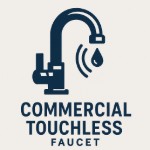
Leave a Reply